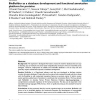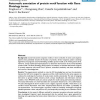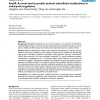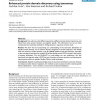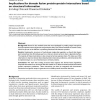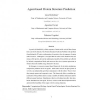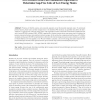BMCBI
2004
13 years 9 months ago
2004
Background: The explosion in biological information creates the need for databases that are easy to develop, easy to maintain and can be easily manipulated by annotators who are m...
BMCBI
2004
13 years 9 months ago
2004
Background: Conserved protein sequence motifs are short stretches of amino acid sequence patterns that potentially encode the function of proteins. Several sequence pattern search...
BMCBI
2004
13 years 9 months ago
2004
Background: It is a major challenge of computational biology to provide a comprehensive functional classification of all known proteins. Most existing methods seek recurrent patte...
BMCBI
2004
13 years 9 months ago
2004
Background: Subcellular localization of a new protein sequence is very important and fruitful for understanding its function. As the number of new genomes has dramatically increas...
BMCBI
2004
13 years 9 months ago
2004
Background: It is well known that different species have different protein domain repertoires, and indeed that some protein domains are kingdom specific. This information has not ...
BMCBI
2004
13 years 9 months ago
2004
Background: Several in silico methods exist that were developed to predict protein interactions from the copious amount of genomic and proteomic data. One of these methods is Doma...
BMCBI
2004
13 years 9 months ago
2004
Background: The Hotdog fold was initially identified in the structure of Escherichia coli FabA and subsequently in 4-hydroxybenzoyl-CoA thioesterase from Pseudomonas sp. strain CB...
MAGS
2007
13 years 9 months ago
2007
A protein is identified by a finite sequence of amino acids, each of them chosen from a set of 20 elements. The Protein Structure Prediction Problem is the problem of predicting...
JIB
2007
13 years 9 months ago
2007
As protein-protein interactions are one of the basic mechanisms in most cellular processes, it is desirable to understand the molecular details of protein-protein contacts and ult...
JCC
2007
13 years 9 months ago
2007
: Proteins are flexible systems and commonly populate several functionally important states. To understand protein function, these states and their energies have to be identified...
